Book Reviews by Genre: Historical

Hedy is a Jewish girl who went to Vienna to escape the Nazis but she unfortunately trapped herself amongst them. This time, she has no escape. Her life gets into greater and greater danger everyday. She hides with her friends and family and becomes a translator and tries whatever she could to keep herself hidden and safe. She meets a German officer who gives her sympathy and feels the position she's in. Kurt is his name, and he and Hedy start to develop feelings for each other. I feel like readers would enjoy the characters and their useful friendships in the book. Overall, this book is a little more mature because of the situation and the events, especially since it's based on true events, but it is still a great read.
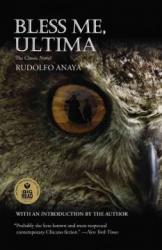
Taking place just after World War II in New Mexico, this novel follows the coming of age of Antonio (Tony). The story is told through the perspective of adult Tony who reflects on his childhood, starting at the age of seven when an elderly curandera, Ultima, moves in with him and his family. Throughout the novel, Tony struggles with understanding his destiny, and whether he should embrace the vaqueros of his father's family or the religious farmers of his mother's. Torn between his parents' different dreams for his future, Tony forms a close bond with Ultima, who serves as his middle ground. During the course of his childhood, Ultima shows Tony how to embrace all sides of his identity to create something new.
I enjoyed this book because it covered a variety of important themes, and although it's centered around Chicano culture and literature, its message transcends cultures. Tony's story was full of heartbreak, adventure, love, and hope, and in one way or another, I found that I could relate to his story and the characters around him. The 2013 film adaption also does a good job of following the original storyline.
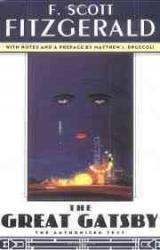
Set during the Jazz Age of the 1920s, this novel is told through the perspective of Nick Carraway, who moves to Long Island New York for work. There, Nick meets Jay Gatsby, a mysterious multi-millionaire who has an obsession to reunite with his former lover, Daisy. Throughout the course of the novel, Gatsby makes several attempts to get Daisy's attention, and with the help of Nick, the two eventually begin a secret affair. Ultimately, however, Gatsby's disillusionment with Daisy ends in tragedy.
I gave this novel a three-star rating because I felt that while the plot and storyline were interesting, it doesn't resonate with young adults so I got bored reading through it. None of the characters are likable because they all commit or help in a crime, and many of their motivations are morally corrupt. Given the time it was written, some of the characters also reflect biases held at the time, which are outdated and borderline offensive now. I did like the overall themes and message of the book, and the 2013 film adaption is the best adaption of the four.
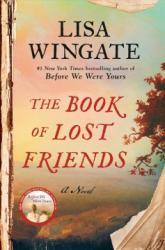
This book was not necessarily easy to read but it was so well done:it juxtaposes the two time lines and the main characters with aplomb and great sustained suspense. 1888 vs 1988 racism and the differences and the shameful similarities. Fascinating characters, great plotting and page turning suspense. Thought provoking and a really good read. Really glad I read this.
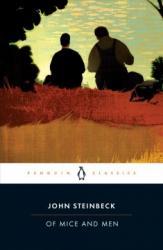
Steinbeck's Of Mice and Men is quite the definition of a classic book. The two main characters, George and Lennie wander around Soledad California in the 1930s, pursuing their dream of owning their own farm. Throughout the book, there is a lot of conflicts involving Lennie, who battles with intellectual disabilities. Of Mice and Men does a fantastic job of highlighting the ups and downs of a relationship, especially when George is left to a lot of "caretaking" roles. The book was not excessively predictable, however, this is a definite element of foreshadowing that could add predictability. The entire story involves the idea of pursuing your dreams, as well as the difficulties people ran into during the great depression, and some of the sexism, racism, and overall discrimination. I think that this is a very important topic to bring awareness to, especially during the time, and I believe that Of Mice and Men does a great job illustrating that.

I absolutely loved this fast paced murder mystery! With awesome likeable characters to an exciting plot, this book has it all. A good murder mystery should always have an exciting ending, and this book did not disappoint. I was totally engrossed in this master piece from start to finish, and cannot wait to start the second one. Stalking Jack the Ripper blew away my expectations and more.
Reviewer Grade: 9.
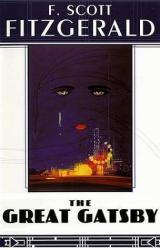
The Great Gatsby is likely the most commonly read book by students between middle and high school, an assigned reading that teaches students what some aspects of life were like in the 1920s and the over indulgent society that preceded the Great Depression. However, it is also a very simple book about an image obsessed man whose life in a summer is documented by a man who barely dares to call himself a friend. For all the hype surrounding The Great Gatsby, especially with a movie starring Leonardo DiCaprio, it is honestly a pretty underwhelming read. Never was I completely enraptured by the story or awestruck by any new information given by the author. It is a descent book with some interesting underlying meaning but overall I would say it is mediocre at best, certainly not a literary masterpiece to be held in prestige.
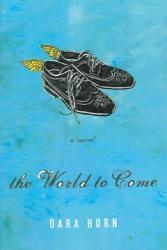
For lovers of art, WWII history, and philosophy, Dara Horn's "The World to Come" packs quite the punch with it's mixture of topic materials and introspection on family, religion, politics, and the concept of preservation. This book follows a family's history from before birth to the afterlife and it's attachment to a very famous painting. In terms of literary analysis, this story has some of the most vivid and interesting imagery and metaphors I have ever seen in a book. Also, it's interpretation of the Jewish afterlife is incredibly interesting, although maybe that is just because I am outside the faith. However, this book is a beautiful, sometimes gorey, piece of
literature that expanded my perspective on many aspects of global life and connection, especially the impact of war on families and time in general.
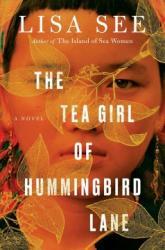
As both a tea lover and someone who is interested in world cultures, The Tea Girl of Hummingbird Lane was an absolutely fascinating read. The story follows the path of a minority Chinese woman who grows up in the Yunnan province tea mountains and her journey back to someone she lost. With a focus on the fermented tea Pu' erh tea, the book details the many processes for making, aging, and steeping the highly sought after tea. I really enjoyed that the author went in depth on the tea making process, especially the Chinese traditions and culture surrounding the practice of drinking tea. Unlike any book I have read, this educational and inspiring piece of literature is a must read for any bibliophile.
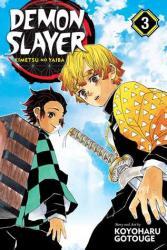
Volume 3 is a perfect introduction to the real world of the demon slayers. After Tanjiro faces off against two powerful demons, we meet Zenitsu, the second main protagonist. The lore of the demon race really starts to unfold in this volume, and seeing it be almost as fleshed out as that of the Demon Slayer Corps is very intriguing. As the exposition starts to pick up the pace towards the main plot, the action and drawing are beautiful. Again, I would recommend this volume to those continuing the series. This graphic novel is relatively light and easy to get invested in, so anyone could get into it!
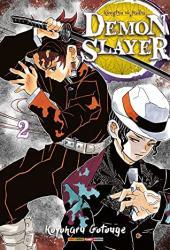
While the first volume of this wonderful series was a straightforward backstory, volume 2 presents a glimpse at what makes Demon Slayer so entertaining. The sub-plots start being developed with Tanjiro joining the Demon Slayer Corps. Much of the main cast is introduced, and the real thrill and dangers of the series are introduced. The atmosphere of the series comes out in full force during these chapters, and as just the second volume, many events are set up perfectly. Overall, I would recommend this graphic novel series to anyone continuing the series. If you are looking to get into this fantastic world, starting with the TV show or volume 1 is the way to go.
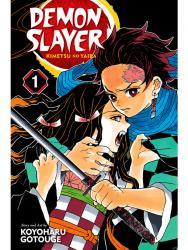
The first volume of Demon Slayer serves as a fantastic exposition to the main protagonist Kamado Tanjiro. It builds up his basic backstory and also sets the plot of the story. The art style and designs of the graphic novel are captivating and seeing some of the intricate foreshadowings during a reread is entertaining. As much as I love the series altogether, the introduction is rather basic and is not very innovative other than through its concept. Overall, I would recommend this volume to anyone looking for a new graphic novel or series to get invested in.

Robinson Crusoe is an incredibly fun novel to read. It is a fictional autobiography about the character Robinson Crusoe and his adventures while shipwrecked on an island. While the book does use some confusing language at times, the creative results it produces are greatly entertaining. The book starts slow, however, the pacing of the book almost depicts the exact development of Crusoe through his stagnant start and then a life of adventure later on. Around a third into the book, Robinson Crusoe simply states that he would focus on only the important parts of his adventure due to his lack of ink. It is at this point where the book starts to shine, and Robinson's island survival starts to mix supernaturalism and realism. The novel does not have any super deep themes and rather opts to just tell a straightforward story, unlike many modern island survival novels that attempt to be thought-provoking. Overall, the novel was a fantastic read. I would recommend this book to any person that enjoys adventure and survival.
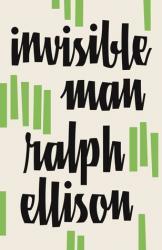
Ralph Ellison's Invisible Man is an essential American classic. Written in the late 1940s, it tells the story of a young African American man who moves north during the Harlem Renaissance and faces many trials as he attempts to find his place in society. This novel is a candid portrayal of life for Black Americans in the pre-Civil Rights era, exposing the hardships and prejudices that are often overlooked in retrospect but were all too real for Blacks during this time. It is honest, reflective, and blunt; often unsettling and disturbing. A central theme of Ellison's novel is the idea of blindness and how it affects identity. The protagonist is left confused and misguided as a result of the blindness of those he encounters, trying to fit into the expectations of others, until at last he realizes that he is, and has always been, "invisible" to society. With this revelation, the invisible man at last finds his own identity.
The novel recounts all of the events leading to the protagonist's discovery of his invisibility, beginning at his colored college in the south and taking the audience north to Harlem. The protagonist faces many different circumstances which reveal just how marginalized Blacks were in the United States in the 30s; each episode is a testament to the challenges faced by African Americans (even a reflection of the challenges faced by African Americans today) due to the blind discrimination of white people. Each incident faced by the invisible man is largely a reiteration of previous ones, merely taking place in different circumstances, which emphasizes his lack of identity--even his own blindness. Eventually, due to an unfortunate incident, the protagonist loses all sense of who he used to be, and this is what allows him to begin to make change--for better or worse. There are numerous violent and suggestive scenes in this novel, so I would recommend it to older, more mature teenagers.
Ellison takes his readers on a powerful, enlightening journey with Invisible Man. His compelling writing is intertwined with tragic humor and soulful undertones of blues and jazz, the backdrop for an incredibly raw and moving novel. The invisible man's story is very relevant to society today, and Ellison's messages should serve as reminders to us all. I believe every American would benefit from reading this novel at some point in their life; it illustrates such an important part of our nation's history, and that of African Americans. Ellison portrays the protagonist's emotions with such introspective depth, every conflict and thought explored in all its complexities. Invisible Man may not be a particularly fun read, but it is important and it is worthwhile.
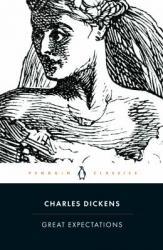
Great Expectations is a story about a young boy, Pip. It starts off with Pip in his expected life, a Blacksmith with his Stepfather Joe. When he comes of age to be apprenticed, he is sent to a mansion to work, under the employ of a strange Miss Havisham. She flips his views upside down, while breaking his confidence in himself. He sees himself and his friends, the Commoners, as dirty and common. His hopes change as well, but are broken.
The story in this is intriguing, as well as long and dense. I personally didn't like this one, but you might.
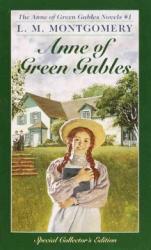
I've read this book many times, and it's always been one of my favorites. It tells the story of Anne Shirley (Anne spelt with an e, mind you) -- a spirited orphan who, by mistake, is sent to live with the old pair of siblings, Matthew and Marilla Cuthbert, on Green Gables farm in the small Canadian town of Avonlea. Anne is smart, friendly, talkative, and most of all, highly imaginative. She proves to be a handful for the Cuthberts, but overall, the friendships she develops, the scrapes she gets into, and just Anne herself are so lovely and heartwarming. I found her relatable on a profound level. While it may not be as thrilling as a fantasy, Anne of Green Gables is a classic that I would recommend to just about anyone.

I actually analyzed The Red Pencil as a choice book for English class, but I really enjoyed it. It's told through a series of first-person poems, rather than the standard prose, which I liked because it helped me go deeper into the main character's perspective and her feelings about the things that were happening to her. The book tells the story of Amira, a twelve-year-old Sudanese girl whose village is destroyed by the Janjaweed as part of the Darfur conflict. She aspires to go to school where she can learn to read and write, and, among her numerous trials, finds relief through her art. The book is a work of fiction, but pulls from many stories that Andrea Davis-Pinkney gathered from real survivors of the Darfur conflict who faced similar challenges to Amira. The Red Pencil is very well-written and effective at evoking emotion and empathetic responses, and it provides the reader with insight into a life very different than the typical American's. I would definitely recommend it to anyone.
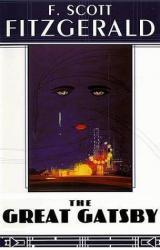
The Great Gatsby by Fitzgerald brings the audience flying back to the roaring 20s. The roaring 20s where prohibition is in effect, there is a lot of money, and people are going to speakeasies. Throughout the Great Gatsby the reader sees the insides of the richer citizens of New York lives, which involves scandalous events, lies/cheating, and glamours parties. The story is told through the perspective of Nick Carraway about his neighbor, Jay Gatsby's life. Overall, the novel is very well-written and it keep me wanting to read more and more. I really liked the novel because it allowed me to see more into the roaring 20s rather than what a history books educates you on. Once you finish this book, you will be in complete and utter shock due to the surprise ending.
Reviewer grade:11
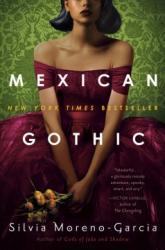
Noemí Taboada is a beautiful socialite who loves wearing opulent purple gowns, riding in a convertible and smoking French cigarettes. A woman of her station, as the novel relates, "was expected to devote her time to the twin pursuits of leisure and husband hunting." Instead, this strong-willed, intelligent and brave woman seizes an opportunity not realizing it could lead to her demise. Neomi’s father receives a disturbing letter from his niece and recent newlywed Catalina. The frenetic message suggests a mysterious doom awaits Catalina, who may need psychiatric help and a divorce, a scandal the businessman wants to avoid in 1950s Mexico City. So Neomi negotiates her way into a chance to attend graduate school – rare in a country when women could not vote – in exchange for heading to the isolated High Place, a distant Victorian mansion once funded by now-depleted silver mines. Once there, she must find out if the letter is nothing more than “female hysteria” as Neomi’s father assumes, or something more sinister.
Moreno-Garcia does a wonderful job sprinkling in the antiquated language of classic Gothic horror to pace this atmospheric creeper while Neomi’s dread about the Doyle family and its hideous patriarch mounts, as does her dueling desires to stay and garner graduate school or flee for her own sanity. The oppressive feel of dead, rotting High Place hints at a history of violence, madness and even darker secrets as the 320-page novel’s protagonist soon finds out. Once there, she meets the drugged Catalina’s menacing and alluring husband, who worms her way into her dreams, which are becoming an evermore disturbing mix of lust and horror. Her only ally is the family’s youngest son, who seems a decent fellow, but hides secrets of his own. Follow along as the amateur sleuth learns more about High Place, its exploitive colonial past and its unique power as the novel – equal parts Daphne du Maurier, Stephen King and H.P. Lovecraft –speeds toward a satisfying, albeit gory conclusion.
Awards: 2020 Goodreads Choice Awards Best Horror
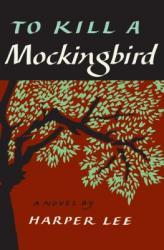
To Kill a Mockingbird is a novel entirely worthy of its praise. The humor, subtlety of the impact left by the narration from a young girl's perspective, and incredibly real themes all fit together perfectly. The story is a straightforward read and combined with the intricate storytelling based on the author's own life, the topics surrounding race and justice feel meaningful. The story follows Scout Finch, a young girl, and her friends Jem and Dill while depicting their views on life in the South during the Depression. The juxtaposition of childish natures and mature outlooks on violence, prejudice, and societal struggles brought about by the narration stand out. Each instance of injustice and depiction of the imperfections of humanity in a struggling society tie the development of the characters and rise to the climax together well. Overall, I would recommend this book to anyone, as it is a fantastic, and rather light read.
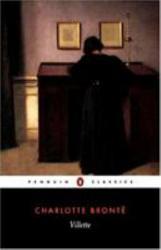
Villette is an incredibly hard read. The novel follows Lucy Snowe in her escape from England. She reminisces on her life's story and the overall storyline is intriguing. The side characters play their parts well, and certain tragedies in the story do leave hard-hitting impacts. Nevertheless, the book is over four-hundred pages of intricate literature with an incredible range of advanced vocabulary. However, the complexity of the read does add a bit of fun to the book, despite drawing attention away from the story itself. Looking up advanced English and French vocabulary almost makes the novel a neat, theatrical dictionary. While hard to understand and read, it allows the reader to dive deeper into each character and develop them more on a personal level. Overall, I would only recommend this book to people looking for a challenging read and with time on their hands.

A Tale of Two Cities is a grand novel by Charles Dickens that details the events of Charles Darnay and Sydney Carton, along with many other characters, throughout the beginning the middle of the French Revolution. The book starts off a little slow, but after getting through most of the exposition, the book turns into an undoubtable classic. The main characters are detailed thoroughly, and their motivations fuel their bond and the plot beautifully. The inner conflicts they face all fit into place like pieces of a puzzle over the course of the novel, which leaves the reader both satisfied and distraught at the same time. The sub-plots also tie the story together well, and the heroic ending is written perfectly. The setting of the French Revolution, romance, and character development throughout the story creates a captivating bond with the reader and always leaves one in a state of suspense. The themes relating to the greater scale of humanity and sacrifice also leave a lasting message. Although it is a decently long read, I would recommend A Tale of Two Cities to anyone as a must read.
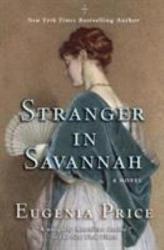
Stranger in Savannah is the final chapter of Eugenia Price's Savannah Quartet series and fills the niche of a Southern historical romance novel.
The novel follows the Browning, Mackay, and Stiles families and does an excellent job of creating drama related to the buildup of the American Civil War. While I do not often read romantic novels and the like, Stranger in Savannah feels very realistic thanks to its historic references. The setting of the Civil war and the air of political tension gave life to the drama, however, the underlying themes and Mark Browning as a character were all the more captivating. The book also drew me in with each characters' ambitions being intriguing and thoroughly fitting in major and minor plot points surrounding the setting and cast of the quartet. Overall, the novel was a fitting end to the series, and I would recommend not only this book but the entire Savannah Quartet to those interested in thematic historical romance.
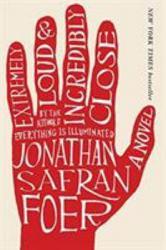
Was very reluctant to start book because I usually don't lean towards heartbreak stories. After reading it, its so much more than that. Its a book about a boy who thinks different than the most of us. The difficulties that this 9 year old boy faces with social interaction and phobias really keeps you intrigued. Oskar the nine year old boy is probably one of the most interesting protagonist characters I've ever met and you just have to read to find out why.
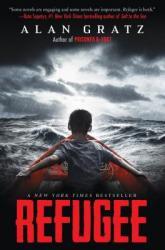
The novel “Refugee” by Alan Gratz wasn’t a very good book in my opinion. I read it for my English class in high school and I didn’t really enjoy it. It’s about three refugees throughout history, but the stories are kind of connected. One refugee is a young boy escaping from Nazi Germany, the second is a young girl escaping from Cuba in the 90s and finally the third is a young boy escaping from Syria in 2016. Before reading this I had read a book about a boy who was in a concentration camp, and it was a true story written by him. Refugee doesn’t even come close to how good that book was. Along with that, it’s not very well written.
Overall, I wouldn’t recommend this book, there are far better books about this topic.
Grade: 11th

I read this book because it’s my mom’s favorite book of all time. It follows a young boy named Pip as he grows up. It’s a love story, and a pretty good one. Though it’s a little hard to read because of the old style English writing that Dickens used, it’s definitely worth reading. Overall, I would highly recommend this book!
grade: 11th
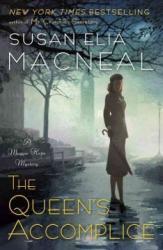
For several months my addiction to the entire Maggie Hope series has seriously interfered with all things domestic! I have just finished yet another well-researched book by a fairly young author, who evidently has a passion for writing novels about career women during the dark days of World War II. Susan Elia MacNeal keeps the pace moving, the tension building, and the characters believable. Maggie Hope is a brilliant academic turned spy! Her adventures, from the first book onwards, will take you into conversations with Winston Churchill, the Royal family, and Nazi sympathizers. I recommend that you read the books in chronological order as each one builds upon the previous book
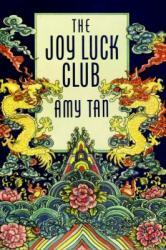
This book expresses the powerful spirits of four Chinese American mothers and daughters. The four mothers formed the Joy Luck Club after creating a strong bond with one another over mahjong after all four moved from China to San Francisco. Each mother holds her own unique struggle while living in China and while raising their "Americanized" children. As the daughters grow they realize that they shouldn't have rejected their Chinese heritage when they were young. Their mothers also wonder if they raised their daughters the right or wrong way because they were able to gift them with the independent spirit of an American, but may have disconnected them from their Chinese culture. While the book describes the lives of each mother and daughter, the plot mainly focuses on Jing-mei (June) Woo who, after her
mother passes away, travels to China to reconnect with the twin daughters her mother was forced to leave in China. Though this story follows the tales of Chinese women, I believe that anyone can find a connection to the struggles and conflicts these women faced.
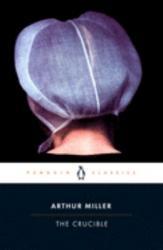
I read this book in English class my junior year of high school. I find the Salem Witch Trials interesting, so I was excited to read this book. While this book is based on actual events, there are some added fictional parts. I thought it was interesting how rumors and blame could cause the deaths of so many people who did nothing wrong. Overall if you find the Salem Witch Trials interesting, I would highly recommend this book!
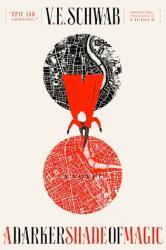
A Darker Shade of Magic introduces the concept of four separate Londons from different worlds. Grey London: grim and without magic, Red London: vibrant, fantastical and full of magic, White London: losing its magic from an ongoing war and numerous power shifts, and Black London: a mystery that was closed off after a mysterious accident. The main character, Kell, is one of two people who are able to travel between the Londons through the use of a type of blood magic. He is the official messenger for Red London and brings messages to the kings of the different cites; however, unofficially he is a smuggler who sells objects from other worlds. He runs into a thief in Grey London after coming into possession of an artifact from Black London, and they must navigate its power and defeat the people that want to abuse it. Schwab's world building and magic systems are incredibly compelling and the concept as a whole sets up a fantastic series. However, the book overall was quite a let down as the story itself was quite overdone, which would not have been much of a problem if the characters were written well. In some parts of the book it become difficult to like the two main characters, which was disappointing because they had all the elements to be great. All of these faults were not the downfall of the book, and Schwab could have potentially gotten away with them; the main flaw was the pacing. At times the pacing was slow and uneventful, making it difficult to want to read the book. A Darker Shade of Magic had the potential to become an amazing fantasy novel because of its ingenuity, but its execution was lackluster.
Reviewer Grade: 11